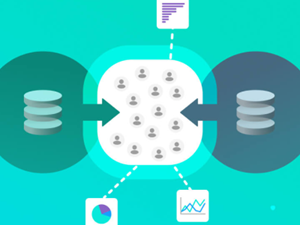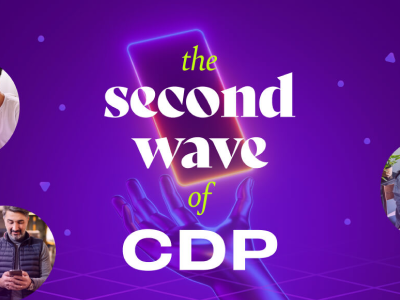Concerned with an economic slowdown, brands turn to retention
June 15, 2023The U.S. economy has been on a rollercoaster since the beginning of the COVID-19 pandemic. Despite seeing record spending and profits three years ago, consumers are looking at high inflation and a possible recession.
This has marketers scrambling for a recession-proof strategy, and many are eyeing stronger retention. It’s up to 25% more expensive to acquire a new customer than keep an existing customer, and even a 5% bump in retention rates boost profits by 95%.
But what makes a holistic retention strategy work? Brands need to build trust and loyalty, demonstrate an understanding of customers and their needs, and continually highlight your value proposition in a relevant way for each customer.
Five keys to making it happen:
Don’t let drift turn into churn.
There’s a big difference between a customer who isn’t buying from you right now and one who is not buying from you anymore. Yet it can be hard to tell them apart, and often it’s not even a conscious choice for the consumer. Sometimes a period of inactivity just devolves into churn.
What can you do about it? Knowing the right time to reach a customer is essential, and you can’t just drop everyone into a time-bound contact strategy. Sending an email two months after a purchase just because “it’s been two months” has a different intent than sending an email two months after a purchase knowing they are ready to buy again. A direct retention solution focuses on sending messages when a customer is most likely to buy again.
Score points with a strong loyalty program.
Loyalty programs reward customers for regularly engaging with your brand, which makes them a go-to component of a retention strategy. Loyalty programs can be especially effective during challenging economic times because their benefits can be designed to relieve hardship through discounts or rewards. They also welcome customers into an exclusive brand community—and during a downturn, people find the allure of community especially compelling. If you’re not sure where to start with a loyalty solution, check out the latest Loyalty Technology Solutions Q1 2023 report from The Forrester Wave™ (spoiler: Epsilon was named a Leader).
Know what your customers do after they become customers—and market accordingly.
Say it with me, “retargeting is not retention.” Retargeting focuses on those who visit your site without purchasing. But, what about those who purchase and never visit the site? Or those who use a browser without third-party cookies, such as Safari or Firefox? Relying on third-party cookies for retargeting is a gamble, especially since nearly half of the internet phased them out, and the other half plans to within the next few years.
Go beyond simple retargeting and focus on what customers do after they purchase. A lifetime loyal customer has different needs than a first-time buyer. Once you understand behavior patterns for existing customers, you’ll be better equipped to deliver communications at the right time to drive engagements. Focusing on current customers has the potential for a big payoff, too, as they generate the highest return on ad spend (ROAS). For example, during the COVID-19 pandemic, an economically shaky condition, many CPG brands experienced double-digit growth. Certain brands who focused on their current customers through targeted, persistent connections were able to drive awareness, repeat purchases and sales.
Speaking of data…
Many companies are embracing the power and necessity of first-party data. They’re also realizing a customer profile based solely on first-party data can have gaping holes. To fill in those holes, marketers can turn to a customer data platform (CDP), which can broaden your first-party view to bridge the gap between owned and paid media activities, and include additional details ranging from demographics to entertainment tastes to expanded purchase and browsing history.
Knowing your customers more holistically allows you to tailor better messages to them. Personalized and meaningful messages (at the right time) can bring back customers time and time again, and they can help develop a stronger sense of your customers in aggregate.
Epsilon’s Digital CDP, for example, uses privacy-compliant, pseudonymous data to unlock broad insights based on a combination of online and offline actions—gathered via partnerships with more than 14,000 different publishers and matched against more than 255 million unique IDs using Epsilon’s CORE ID solution. It’s the first of its kind to combine traditional CDP behaviors, like gathering and organizing data, with an identity solution all in one platform. The result is brands can precisely dial in their offers and messages.
Expand the scope of your customer relationship.
If customers only interact with your brand when it’s time to buy and start buying less frequently during an economic downturn… well, there’s less of a relationship. However, as part of a holistic retention strategy, perhaps you can interact more broadly. Sometimes, the “thing” that a person needs isn’t to be sold to. They need to know more about your product or brand as a next step, in which case, serving up the right piece of content continues the relationship. In that case, you’re nurturing and building relationships without the pressure of a transaction.
Within some companies, there can be an impulse to cut back during a downturn on marketing spend that doesn’t directly drive sales. It’s wise to resist that temptation for the sake of your customer relationships.
Every brand and marketer loves to win over new customers. But retaining and expanding relationships with existing customers is just as (if not more) vital to your overall success—especially during a market downturn.
Originally published on Epsilon’s blog.


